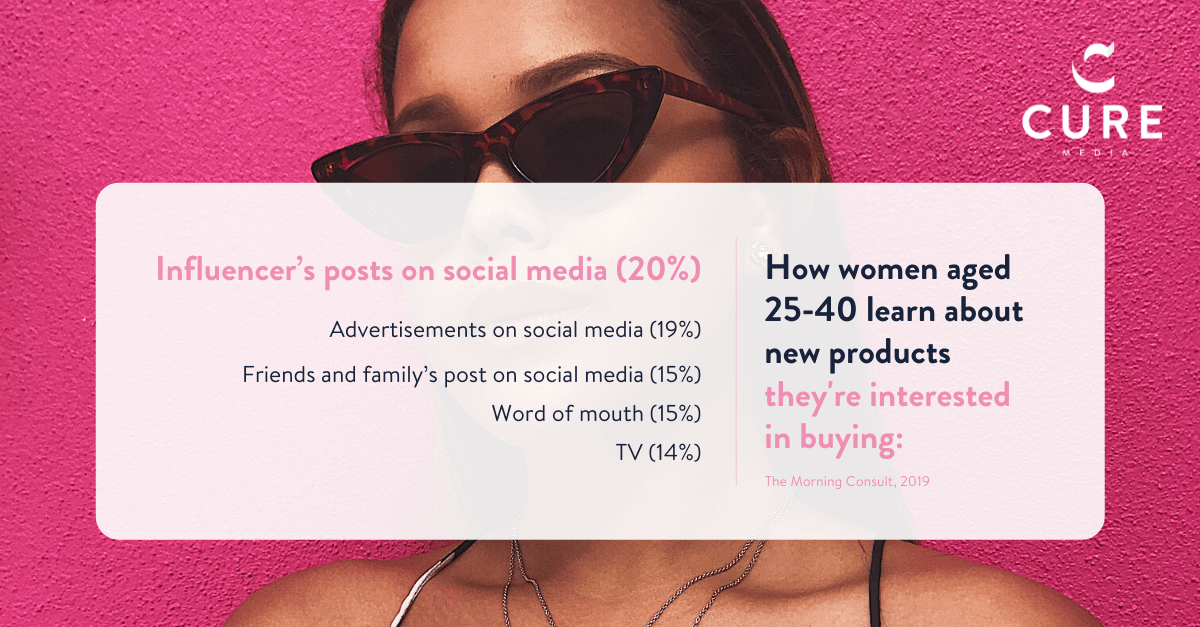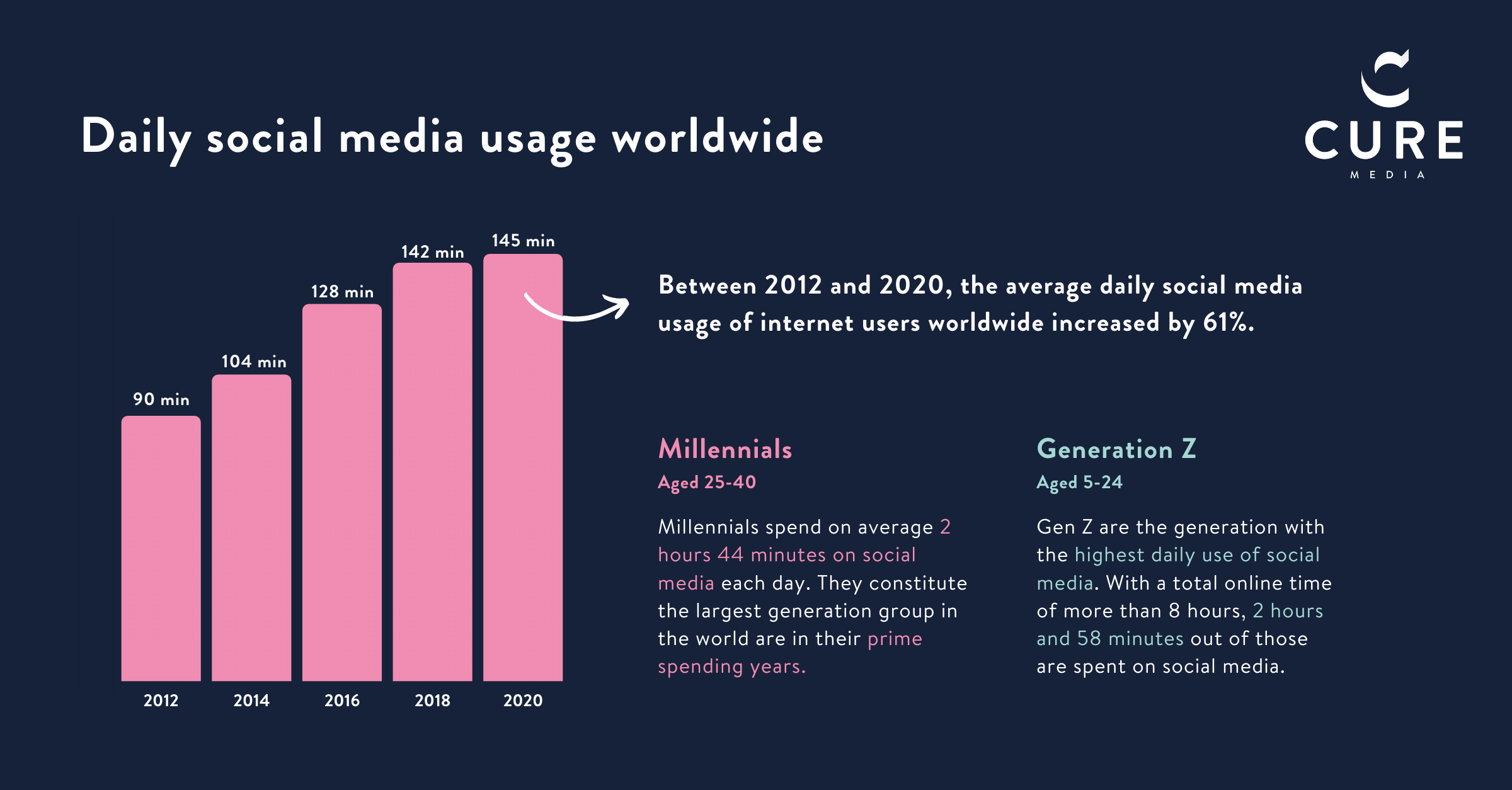Brands are facing an extreme challenge as the online arena becomes more crowded than ever before: how to stand out from the crowd. In this article, we will walk you through why keeping up with the online shift needs to be a top priority, the ever-changing consumer behaviour and how it’s affecting brands, as well as our best advice on how brands can approach this shift and succeed with standing out from the crowd.
Why brands need to stand out from the crowd
The digital transformation is taking place here and now, and the pandemic in 2020 meant a five-year acceleration for eCommerce. The result? The digital marketplace is more crowded than ever. Store-oriented retail giants, whose strategy has long been to have physical stores on the most crowded shopping streets, now have to rethink and shift focus to the online arena.
The place to be for fashion brands are where consumers are strolling, where they do their ‘window-shopping’ and seek inspiration. The difference today is that consumers prefer to listen to like-minded people rather than brands, and the most attractive locations for brands are no longer on Oxford Street, 5th Avenue or Champs-Elysee. Instead, they are on social media platforms and even in closed private chat groups.
One of the biggest challenges for companies today is to keep up with the changing landscape and to adapt their communication to these new audiences’ needs and wants. Do you know how to be relevant to your audience today, and in the future? Hear our CEO and Co-Founder, Sam Foroozesh on the topic:
With more and more brands entering the digital arena, it’s becoming much more difficult to get your audience’s attention and competition online is tougher today than it has ever been.
As a result of this behavioral shift, and with tremendous amounts of data at hand, many companies have put focus on short-term sales activations that lead to quick wins. In a more and more competitive market, however, this strategy only makes it harder to grow and increase profit in the long run.
The brands that will succeed are those who have the ability to put their focus on brand-building activities, the brands that have a solid strategy in place for meeting their audience on their terms.
Important to note here is that it’s no longer enough to provide a smooth online experience. Factors such as fast shipping and safe payments are no longer unique selling points that make consumers choose your brand. These are only hygiene factors. What makes your brand really stand out and earn the love of your audience is how well you’re building a relationship with them.
Standing out from the crowd and becoming a permanent fixture in your target audience’s social feeds and lives is a challenge, but it’s not impossible. Here are three critical things to have in mind:
1. Win your audience’s minds through people they trust
The demand for peer-to-peer communication has gone beyond enthusiasm and is now an expectation. And the reason for that is simple: consumers trust their peers (and they include influencers in that group) more than they trust your marketing team.
But nowadays, even in a peer-to-peer channel such as influencer marketing, it takes time to build trust towards this audience. Winning consumers’ trust with a one-off campaign was possible only a couple of years ago, but we’re here to tell you that those days are long gone.
Research supports that your target audience wants to shop based on recommendations from people they trust, and 82% of millennials and Gen Z trust influencers. Think about it. Faced with an audience that spends around three hours a day on social media and trusts peer-to-peer communication, how can you reach them effectively? Preferably through people that they trust, where they spend time! In modern marketing, brands need to get better at really understanding their audience and responding to what they learn.

But despite many brands continuing to increase their budgets in influencer marketing, many still miss out on being persistent and having an always-on approach to the channel. If you want to gain trust with the millennial or Gen Z women, building brand preference and staying top of mind when it’s time for them to make a purchase, you need to think long-term in influencer marketing.
The core and heart of influencer marketing is you getting the unique opportunity to create people-to-people relationships that foster trust in your brand and forge deeper connections with your audience. Don’t invest in short-term influencer marketing to later find out that it won’t net you the results you need.
2. Build brand through relationships
Studies show that strong and well-managed brands grow faster. A weak brand often means low differentiation and no long-term profitability. In today’s digital world, emotional brand building is more important than ever, and you need to find the right balance between short-term sales activations and long-term brand building, and further to this, how these two correlate. You need to know how to create value and differentiation early on in the consumer journey.
You as a company need to ensure you have the right partners, knowledge and resources in place to understand how to build a strong brand and a strong community. This is what consumer brands with high growth rates have succeeded with.
Weighing up whether you should handle influencer marketing in-house, or partner with a specialist agency? In this podcast episode, we’ll be helping you determine which approach would work best for your brand.
Finally, look at marketing as a sound investment for the long term rather than just a solution for the here and now.
3. Be relevant
We see a massive shift on the consumer scene right now as new generations – millennials and Gen Z – lead the way for what tomorrow’s business will look like. These generations are truly reshaping the way brands act and communicate. This shift is affecting most industries and new methods to remain relevant for your audience are emerging across various sectors on a global scale. Keep a close eye on them!
If you don’t adapt, you risk losing market share and even your whole business to brands that know how to be relevant, brands that know their audience by heart and know how to win their trust.
In order to stand out from the crowd, you need to know what your audience expects and wants. Being relevant means being personal, joining your audience’s conversations, meeting them where they spend time, and talking to them through people that they trust. This can be expensive but gets a lot easier and more time-efficient using, for example, influencer marketing and user generated content over brand-to-peer communications and brand produced content, which is no longer deemed trustworthy or, in many instances, reliable.
Learn about the media consumption trends for 2022 here.

4. Don’t just pop in whenever you need something
The reality confronting traditional brands’ is that their biggest threats, the digital natives, are already factoring most, if not all, social media tactics into their strategy and they’re doing so on an unparalleled scale. Diversifying and scaling your social media – and influencer marketing – strategy simply isn’t a question of competition anymore, it really is one of survival. You must stick with your audience through high and low seasons and provide value year-round, as opposed to jumping into the conversation for a product launch only to go dark once the moment has passed.
The purpose of scaling up your influencer marketing from one-off campaigns to a continuous presence is to get more out of influencer marketing. With a long-term, always-on approach you will be able to generate better results and ROI by continuously optimising your effort. In turn, you will also establish more touchpoints with your audience and communicate with a larger portion of them. Who wouldn’t want that?
Visa detta inlägg på Instagram
In summary
Finally, keeping in mind that millennials and Gen Z are open to trying other brands, and with more choices than ever in the online arena, you have to stay on your toes to even be considered when consumers reach the point of purchase. Be where they are – in the social sphere.
Make them feel involved, prove to them that your brand is a part of their age and time. At the end of the day, we are all humans and we crave recognition, so make your audience feel that you are adjusting to them and never ever expect the opposite.
So with all that said, now it’s time to ask yourself the million dollar question: have you truly adapted your communication, methods and channels to your target group’s behaviour? And will you stand out from the crowd?



